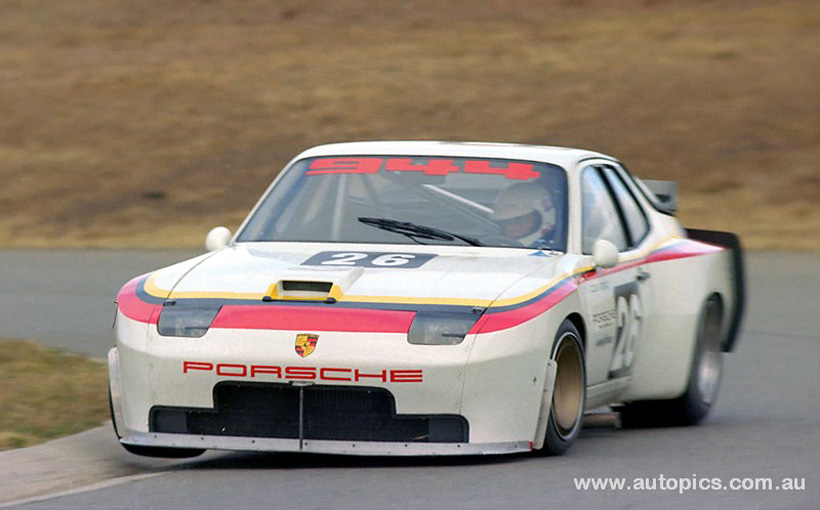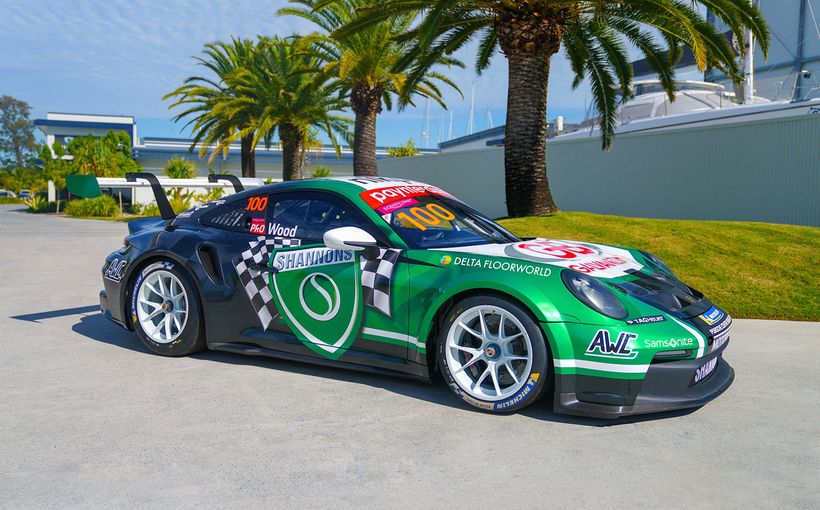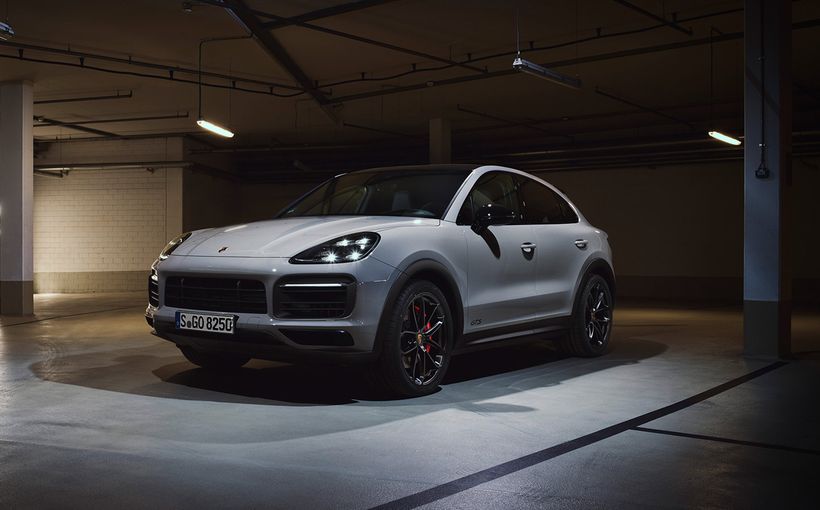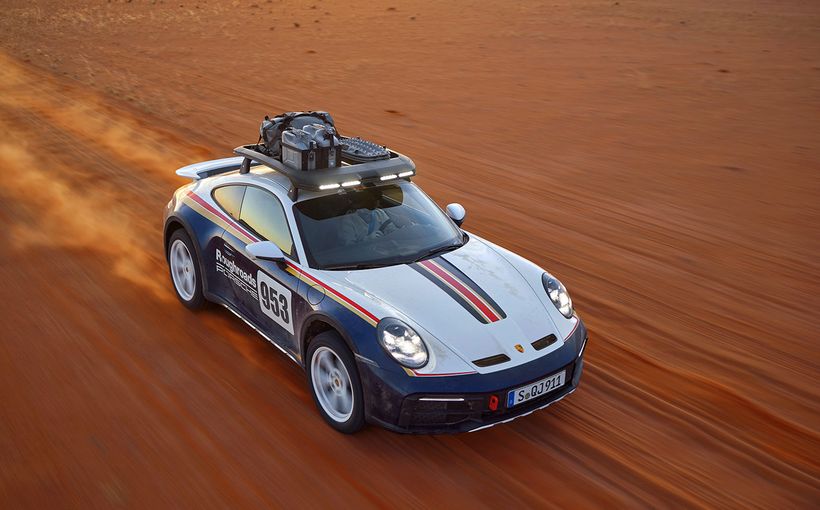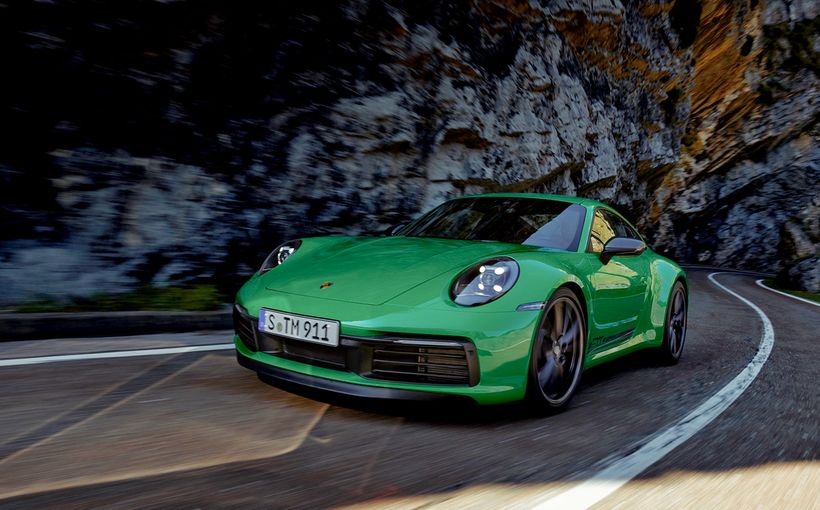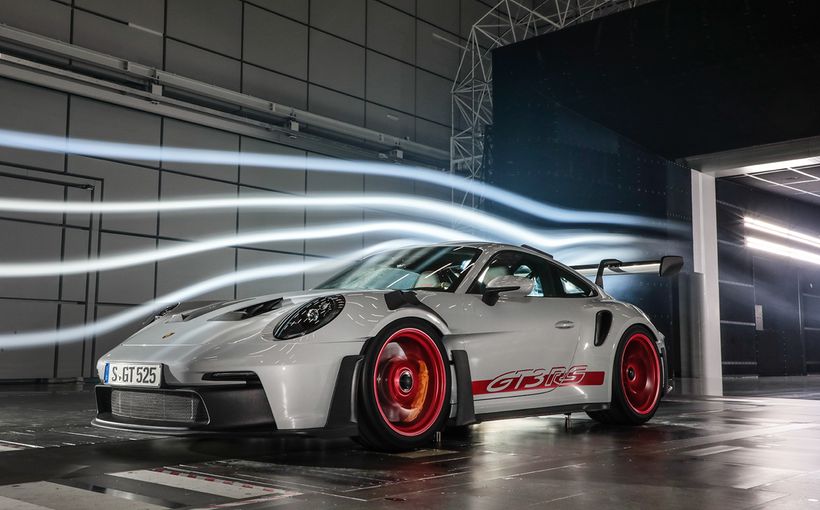Porsche 924, 944, 968: Stuttgart’s Front-Engined Racing Foray

They called it a ‘944 Turbo’ but the car entered by local Porsche distributor Alan Hamilton for Colin Bond to drive in the 1982 Australian GT Championship was a locally modified version of the ill-fated 924 Carrera GTR Hamilton took to Le Mans in 1981. Powered by an exotic 2.5 litre DOHC factory engine, it was claimed to produce 500 bhp, but was no match for the awesome 935 of team-mate Alan Jones which won every race. Bondy finished a solid third in the series.
The 1976 release of the Porsche 924 succeeded in attracting a new type of buyer into the Stuttgart fold alongside the legendary rear-engined 911. Unlike its famous stable-mate, though, Porsche’s first front-engined sports car was never designed with racing in mind. The fact that the 924 - and its 944 and 968 successors - wrote their own chapters in motor sport history is a testament to the German marque’s ‘race what we sell’ philosophy.
The 924, with its 2.0 litre inline four and rear transaxle arrangement, was widely maligned by enthusiasts for not being a ‘real’ Porsche. It was originally designed to be an economical sports coupe for Volkswagen to replace the mid-engined 914, using a substantial amount of VW/Audi componentry. However, when VW went cold on the joint venture, Porsche had no hesitation in adopting the 924 as its own entry-level model to complement its premium V8-powered 928, as the two cars had been designed simultaneously.
The decision to race the 924 though, was not only a seismic shift in Porsche’s rear-engined competition philosophy but also the catalyst for a series of faster and wilder competition versions which strongly influenced its evolution into the 944. It was the 944 which not only raised the performance bar but also removed the stigma that these front-engined four cylinder coupes were not ‘real’ Porsches. The final 968 was the icing on the cake and each model has its own racing story to tell.

The trio of 924 Carrera GTPs which debuted at Le Mans in 1980 showcased the strong influence of Porsche’s competition programs on its future road car models. The wide flowing bodywork of the 924 Carrera GTP, driven to sixth outright and third in class by Manfred Schurti and Jurgen Barth, provided a clear pointer to the styling of the impending 944 production car. Image: www.sportscardigest.com
924: Porsche’s first front-engined racer at Le Mans
Porsche revealed its competitive plans with the hot Carrera GT concept based on the 924 Turbo at the 1979 Frankfurt Motor Show. While the new car was under development Porsche didn’t waste time in deriving competition versions from it, as at that stage under Ernst Furhmann’s leadership the company was clearly moving away from the 911 in its future product planning.
Porsche planned to enter three 924 Carrera GTs in the 1980 Le Mans 24 Hour race to compete in the Group 4 division against other production-based sports cars. However, as not enough had been produced in time to meet homologation requirements, they had to compete in the GTP (or GT Prototype) class instead, which catered for purpose-built racing cars. As a result, they were renamed 924 Carrera GTPs.
The 2.0 Audi-based four cylinder engines used the standard 924 block, crankshaft, rods and cylinder heads but featured bigger turbos, intercoolers and Kugelfischer mechanical fuel injection. With almost double the turbo boost of the road cars, these engines were rated at 320bhp at 6200rpm with 380Nm of torque at 4500rpm.
Compared to the production version of the Carrera GT, the 924 factory race cars had even wider polyurethane bodywork extensions and four neatly integrated driving lights for the long night stages. They were also much lighter, weighing just 945kg compared to about 1180kg for the road cars.

Cutaway of the 1980 924 Carrera GTP ‘Le Mans’ shows the sublime design and workmanship in these hand-built factory race cars. Note the huge air-to-air intercooler mounted at the front of the engine, which helped to cool the turbocharger’s high pressure inlet charge for maximum power. Image: www.pinthiscars.com
Not surprisingly the works 924s had to take a back seat in qualifying. However, during the following rain-affected 24 hours their excellent handling and durability shone through, steadily climbing up the leader board as many rivals crashed or retired with mechanical failures.
The highest placed 924 Carrera GTP finished sixth outright and third in class with the other two coming home fifth and sixth in class. It was a very satisfying result for Porsche as it plotted a front-engined competition future for its production-based models.
Not long after the 924’s impressive Le Mans debut, production of the 924 Carrera GT road car provided the basis for a lighter and more powerful variant called the Carrera GTS, which was required to homologate a customer racing version for 1981.
This new factory racer was called the 924 Carrera GTR and only a handful was produced. The GTR benefitted from the lessons learned from the 1980 Le Mans GTP cars, including the hottest version of the Audi-based 924 engine with a thumping 375bhp.

Colin Bond aboard the ‘Spirit of Australia’ 924 Carrera GTR which was destined not to qualify at Le Mans in 1981 due to a faulty gearbox. Given that another 924 GTR won its class that year, it makes you wonder how well the all-Aussie crew could have performed. Image: www.autodiva.fr
924 Carrera GTR at Le Mans: The Australian Connection
Although several 924 Carrera GTRs were entered for the 1981 Le Mans 24 Hour, they left some customers disappointed including Australian Porsche distributor Alan Hamilton. He entered his own GTR for an all-Aussie driving squad comprising Peter Brock, Colin Bond and Jim Richards.
Dubbed the ’Spirit of Australia’ (long before Qantas embraced that term) and presented in a patriotic metallic green and gold livery, the new car was crippled by a serious mechanical problem from the start of official practice.
When Brock ventured out onto the circuit he completed only half a lap before discovering he could not change gears. Bond also had a run and suffered the same problem, frustrating the Aussie team’s attempts to qualify. They ended up as second reserves, but did not get a start.
This failure was very upsetting for Hamilton, particularly after he returned to the factory and discovered the cause of the problem; a small error in production tolerances in the new Getrag gearbox had caused the gearshift mechanism to seize after the transaxle reached operating temperature.
It was a bitter blow but Hamilton would regroup and return to Australia with the GTR, which was reconfigured to suit new local rules with a larger 2.5 litre turbo engine (see 1981 Le Mans 924 Carrera GTP) and driven by Colin Bond to third place in the following year’s Australian GT Championship.

The stricken Aussie 924 Carrera GTR in the pits at the famous Circuit de la Sarthe in 1981. Note the tidy on-board pneumatic air jacks - very handy for a car which was going nowhere that weekend! Image: www.diecastxchange.com
1981 924 Carrera GTP Le Mans: the first 944 prototype
For 1981 Porsche entered an even more aggressive development of the 924 Carrera GTP which served as a teaser for where the company was heading with the 924 road car’s much anticipated successor - the 944 - due for public release only weeks after the 1981 Le Mans 24 Hour.
Porsche had been stung by criticism of the 924’s humble VW/Audi origins. The overwhelming message from loyal customers and media critics was that to be a ‘true’ Porsche it had to be powered by a ‘true’ Porsche engine, so Weissach came up with an answer that would silence even the harshest critics.
This vehicle (race chassis no. 924-006) was a prototype built for the GTP class. Although it appeared outwardly similar to the 1980 Le Mans cars, the engine was the first 100 percent Porsche water-cooled four. It was in effect derived from one bank of the 928’s aluminium V8, with a cubic capacity of 2.5 litres and a DOHC cylinder head with four valves per cylinder.

The works-entered 924 Carrera GTP, which Walter Rohrl and Jurgen Barth drove to seventh outright at Le Mans in 1981 against many larger capacity rivals, was a special car indeed. Its experimental 2.5 litre turbo engine strongly influenced the design of the production 944 engine, body shape and other components. No surprise this superb prototype racer is often referred to as the '944 GTP' or ‘944 Le Mans’. Image: www.porsche-scene.de
An enthusiast would naturally assume this was the same cylinder block used in the production 944 engine and the same DOHC 16-valve head that ended up on the production 944S a few years later. But no, this was a pure-bred racing prototype, bristling with unique components which provided the basis for 944 production items to evolve and benefit from, as prototypes should always do.
Porsche made very few of these exotic 2.5 litre four cylinder race engines, which with a huge 100mm bore and short 78.9mm stroke resulted in an oversquare free-revving design. Another feature shared with the 944 production engine was Porsche’s first use of counter-rotating balance shafts, to dampen some fearful harmonic vibrations inherent in such ‘big bore’ inline fours. The engine was mounted at a 45 degree angle to fit under the low bonnet height and equipped with dry-sump lubrication.
Its DOHC 16-valve head, like the cylinder block, differed from the 944S production version, with a unique crossflow coolant passage design and both camshafts turned by a crankshaft-driven Gilmer toothed belt. And the production 944S never featured the prototype’s oh-so-cool valve cover, with ‘Porsche’ and ‘944 Le Mans’ in the casting (see image).

Another view of the 924 (aka 944 Le Mans) Carrera GTP in action at Le Mans in 1981 shows the elaborate lightweight bodywork with the 924’s familiar rear-end visible at the back. The large flowing guard flares were needed to shroud huge 14-inch wide wheels and tyres while also minimising aero drag at speeds exceeding 300 km/h. Image: www.porsche-scene.de
A big KKK turbocharger and air-to-air intercooler provided plenty of puff, all finely controlled by the latest Bosch Motronic electronic engine management system which was a major advance over the 1980 cars. This prototype engine was capable of some amazing power outputs, reportedly as high as 600 bhp (!) on the dyno and as much as 500bhp with 1.5 bar boost in sprint race trim.
However, to ensure total reliability at Le Mans, the boost was reduced to 1.1 bar to produce around 410-420 bhp at 6800 rpm. Porsche played it extra safe by also installing a tall top cog in the four-speed gearbox (being trialled for the upcoming 956) which limited engine speeds to 6200rpm on the infamous Mulsanne Straight.
Chassis 924-006, dressed in a stylish Hugo Boss race livery, was a featherweight in true prototype tradition at under 1000kg. Huge Dunlop tyres were mounted on 16 x 11.75-inch wide front and 16 x 14-inch wide rear E58 BBS wheels, with integral brake cooling fans and single-nut centre lock hubs. The rest of the chassis package was basically the same as the 1980 Le Mans cars, with more aggressive yet flowing bodywork which provided another clue to the impending 944’s styling.

Two views of the exotic and very rare 2.5 litre DOHC four-valve engine used in the 1981 Le Mans prototype. How good does that camshaft cover look with ‘944 Le Mans’ cast into it? There’s just something special about factory race cars! Images: www.flussigmagazine.com & www.stuttcars.com
This very special 924 Carrera GTP was shared by German factory aces Walter Rohrl and Jurgen Barth to give it the best chance of success. The car played its role superbly, too, as it didn’t miss a beat for 24 hours, stopping only for scheduled refuelling stops, tyre and driver changes. Porsche ads later claimed it spent less time in the pits than any other car in the race.
Despite running in the prototype division against some competitors with double the engine size, Rohrl and Barth brought the 924/944 Le Mans prototype home in seventh place outright and third in the GTP class. This was an outstanding achievement for a brand new engine design, especially given that only 20 of the original 55 starters made it to the finish.
After 1981 Porsche chose to concentrate its competition resources on the new Group C sports car regulations and development of the legendary mid-engined 956. Although 924 GTRs won their classes at Le Mans in 1981/1982 and continued to be raced by private teams in Europe and the US, the appointment of new Porsche managing director Peter Schutz in 1981 saw competition development of the 911 reactivated and the brief era of the front-engined factory racers soon consigned to history.

It’s interesting to reflect on how Porsche continued to exploit the production links with its front-engined racers after their demise. A 1986 advertisement for the new 944 Turbo depicted the long retired 1981 924/944 GTP Le Mans and a production 944 Turbo to reinforce the message that Porsche race cars have a direct influence on their future road cars. Image: www.carapics.com
924 and the Repco Trial
The Porsche 924 may not be renowned as one of the world’s greatest rally cars but it certainly shone in the 20,000 km 1979 Repco Round Australia Reliability Trial, when a lone entry finished ninth outright.
It was also one of only 13 cars of the 167 starters to complete the full distance and if not for a potentially disastrous brake failure in the final days of the event could have finished even higher up the order.
The 924 was entered and prepared under local Porsche distributor Alan Hamilton and driven by the all-German crew of Jurgen Barth and Roland Kussmaul. In early 1979 these motor sport-loving Porsche technicians had embarked on their own non-works rallying program with the 924, competing in high profile endurance events like the Monte Carlo Rally (20th overall) and East African Safari (retired).

Rally cars always look so neat and tidy in the early stages of an event, don’t they? This is the Barth/Kussmaul 924 which ran so strongly in the 1979 Repco Round Australia Trial, finishing in the top 10 despite a roll-over. Note use of the venerable Fuchs five-spoke alloy wheels with the early 911’s iconic ‘starfish’ highlights. Nice touch.
The notorious Safari had exposed problems with shock absorbers, suspension travel and ultimately the transaxle; valuable lessons learned which were incorporated in the Repco Trial contender. Built up from a bare bodyshell at Hamilton’s Melbourne race shop, the 924 was powered by a special factory-built engine which the Germans brought with them. It was effectively a 924 Turbo without the turbocharger, as Weissach was concerned about inconsistent fuel quality along the route.
They should also have been concerned about only having a two-man crew, when the majority of the 167 cars entered had three drivers aboard for the longest, fastest, toughest and cruellest Round Australia Trial of them all.
The total distance of almost 20,000km included an incredible 8,000km of car-busting competitive stages over some of the worst roads and bush tracks imaginable. Competitors had to average a staggering 1,400km a day for 14 days straight at very high average speeds. And the Porsche crew also had to contend with some mechanical gremlins related to fuel delivery and rear suspension.

The Porsche Cars Australia 924 gets some attention during a service stop in the gruelling 1979 Repco Trial. The front-engined coupe was one of two Porsches entered by the local distributor; the other was a 911 Carrera shared by Dean Rainsford and East African Safari/Ampol Trial winner Edgar Herrmann which finished one place ahead in eighth.
Regardless of these adversities, the gritty German pair was well placed before the final leg down the east coast and looking good for a high placing in the top ten until Barth had to brake suddenly on a special stage and discovered he had no brakes. The 924 left the road and rolled. Barth not only broke his hand in the crash but a spare shock absorber inside the cabin also broke loose and struck him in the face!
Car damage was remarkably light, but what the shaken crew didn’t realise was that their Porsche had come to rest delicately balanced on the edge of a cliff with a sheer drop below. Fortunately a small group of spectators was nearby and held onto the 924’s deranged bull bar for dear life until the crew could scramble out. Barth and Kussmaul then helped to drag it back onto the road and drove to the next service stop.
The 924’s curved roof was now flat, the panels creased and the wheels out of alignment, but amazingly it was still in ninth place overall. The service crew did its best to patch things up to complete the event, with only one front brake and one rear brake working. Barth could no longer drive due to his hand injury so Kussmaul drove the final stages to the finish in Melbourne, during which he narrowly avoided crashing on a couple more occasions with their near brakeless car!

The battered 924 and its weary German crew soldier on towards the finish of the Repco Trial after rolling in the final days of the event due to brake failure. We assume this was taken after that tumble, judging by the cracked windscreen, creased panels, ‘gravel rash’ and deranged bull bar. The two-man crew of Barth and Kussmaul were skinny, tired but in good spirits at the finish, claiming that they looked like their grandfathers!
The 968 and the Bathurst 12 Hour
The 968 was the end of the line for front-engined Porsches until the Cayenne SUV in 2003. The 968’s predecessor, the 944, sold from 1981 to 1991 and produced numerous higher performance variants including the 944 Turbo and 944S.
Although Porsche’s competition focus for its production-based cars was primarily on the 911, 944s did compete in Europe (Porsche Turbo Cup) and in North America, which saw a US-developed version with a full tube-frame chassis developed for the IMSA GTO and GTU divisions. Locally, the most prominent local example was Alan Hamilton’s GT variant mentioned earlier.
A change in the vehicle eligibility list for the James Hardie 12 Hour production car race at Bathurst in 1993 was billed as ‘The Battle of the Supercars’. The reigning champion, Mazda’s twin-turbo RX-7, would face some serious competition in the form of the Honda NSX, Lotus Esprit, Nissan GT-R – and Porsche’s new 968CS (Club Sport).

The pair of 968CS coupes driven by Peter Fitzgerald/Nicholas Leutweiler/Brett Peters (No.4) and John Smith/Kevin Waldock (No.5) showed potential race-winning speed and reliability on their James Hardie 12 Hour debut in 1993, but were overwhelmed by the faster twin-turbo Mazda RX-7s in the closing stages. Wheel offsets on the Porsche pair were also found to be 10mm outside acceptable tolerances, resulting in exclusion and the loss of their hard-earned second and third places. Image: www.autopics.com.au
Based on the restyled 968 with its 240bhp 3.0 litre inline four, six-speed gearbox and big Brembo brakes, the semi-competition Club Sport variant was one of the world’s finest ‘track day’ cars. It was also considered ideal for the Bathurst 12 Hour given its 50kg weight loss over the standard 968 plus revised suspension tuning and big 17-inch wheels. In the build-up to the 1993 clash, the 968CS was judged to be the Mazda’s main threat as described in Chevron’s Motor Racing Yearbook:
“(Mazda) team manager Barry Jones knew the key to success was not so much what happened on Mount Panorama itself but back in the pits. The RX-7s would be among the fastest cars but with the twin-rotor’s considerable thirst and the car’s healthy appetite for brakes, they would probably spend the most time in the pits – the 968CS with its more economical 3.0-litre four cylinder engine and huge brakes could go nearly twice as far on a tank of fuel and even further before its brakes needed attention – the 968CS was expected to make at least three stops less than the Mazdas."
“Besides, the Porsches, under the command of inaugural 12 Hour winner and production car specialist, Peter Fitzgerald, had just defeated the Mazdas to finish first and second in the Sandown 6-Hour. And if that in itself was bad enough news for Mazda, Fitzgerald had done it without a brake pad change. The RX-7s would have to make up the time on the track.”

Fitzgerald’s Porsche squad returned to the James Hardie 12 Hour in 1994 determined to make amends for the 1993 wheel debacle. With a top flight driving squad including Jim Richards and Brad Jones, the Porsches struggled with gearbox issues and had to settle for second and third places behind the dominant Mazda RX-7
And that’s the way it played out after the race’s pre-dawn start, with the Mazdas lapping much faster than the Porsches but losing their advantage each time by having to make more fuel stops. By mid-afternoon the 968s were running first and second with a healthy lead until a stray horse from a neighbouring property wandered onto the circuit!
This triggered an untimely Safety Car period which allowed the highest placed Mazda to close right up and surge past the Porsches when racing resumed, powering home to an against-the-odds victory. To add insult to injury, both of the German cars were excluded post-race for running illegal wheel off-sets.
The Porsche team was determined to fight back in 1994. However, the best-laid plans can always come unstuck, particularly in a race as long and tough as the 12 Hour. Despite the best efforts of Peter Fitzgerald and his team, the Porsches were outgunned in the 1994 race, as the Mazdas were faster and spending less time in the pits than the previous year.

As the front-engined Porsche era drew to a close, it was only fitting that the final 968 model raced at Le Mans, even without factory support. True to its customer racing focus, Porsche produced only 17 examples of its potent 968 Turbo S road car to homologate the ultra-rare 968 Turbo RS for private clients to race. Only three Turbo RS racers were built and one was entered by Peter Seikel in the 1994 Le Mans 24 Hour. Sadly the car was eliminated early in the race following an accident.
One of the two Porsches was lapped by the leading Mazda before a quarter of the race had been run and by mid-morning both of the German cars had lost the use of second gear, which was costing plenty of lap speed with a full tank of fuel.
The leading Fitzgerald Porsche was given a glimmer of hope after one of the two works Mazdas blew a turbo and retired, but the 968CS was burning through its brake pads at a prodigious rate and losing too much time in the pits changing them. The final blow was a late-race collision with a slower car, which left the Porsche in no condition to fight without second gear and now with deranged steering.
As the works Mazda team raced to its third 12 Hour win a row, the Porsches limped home again in second and third places. It had been a gallant effort, but with the 968 model nearing the end of its production run and the 12 Hour moving to Eastern Creek in 1995, it was also the last time we would see the front-engined Porsches racing in anger on the Mountain. It really was the end of an era.

